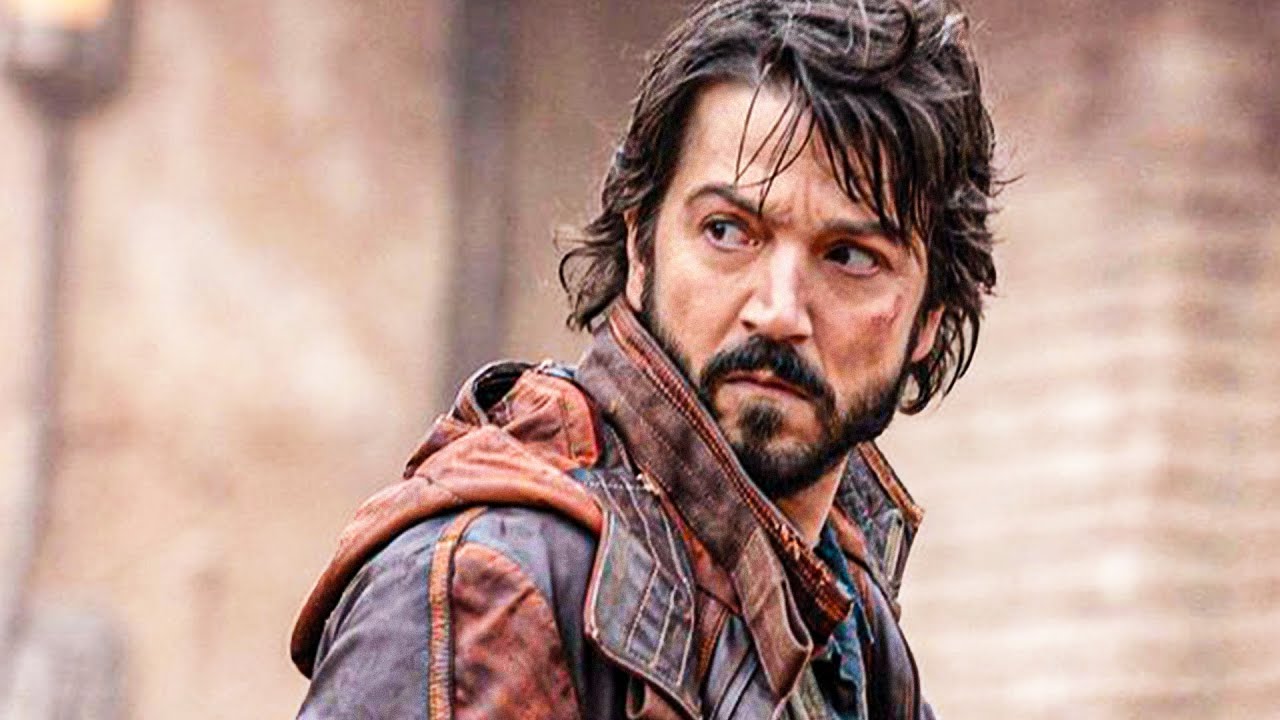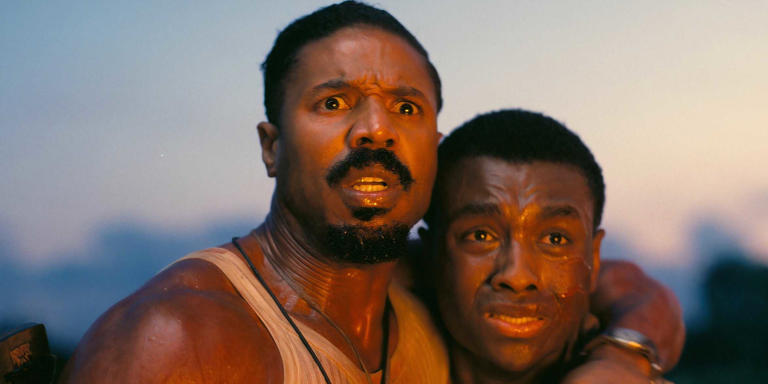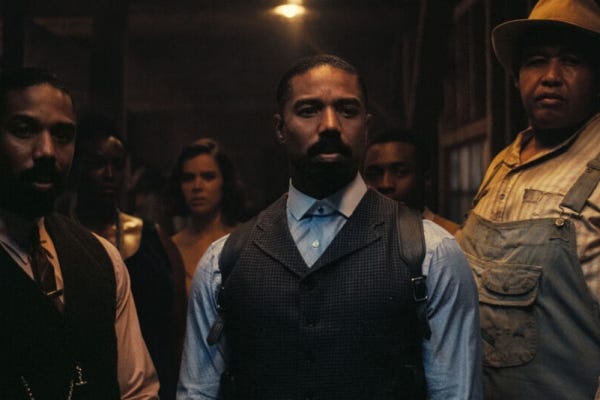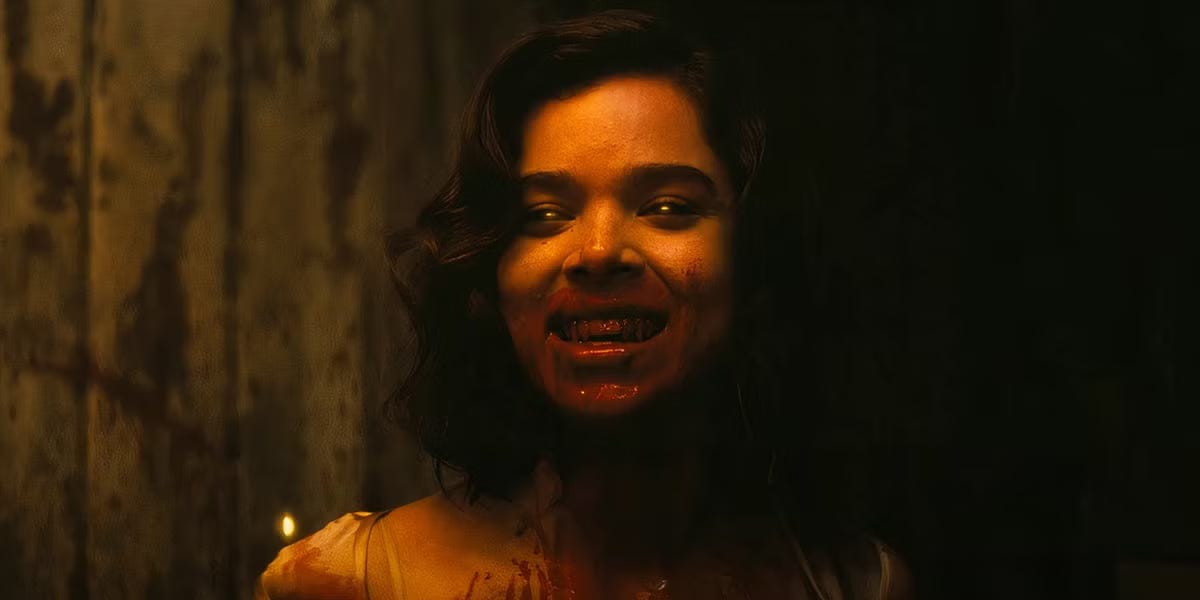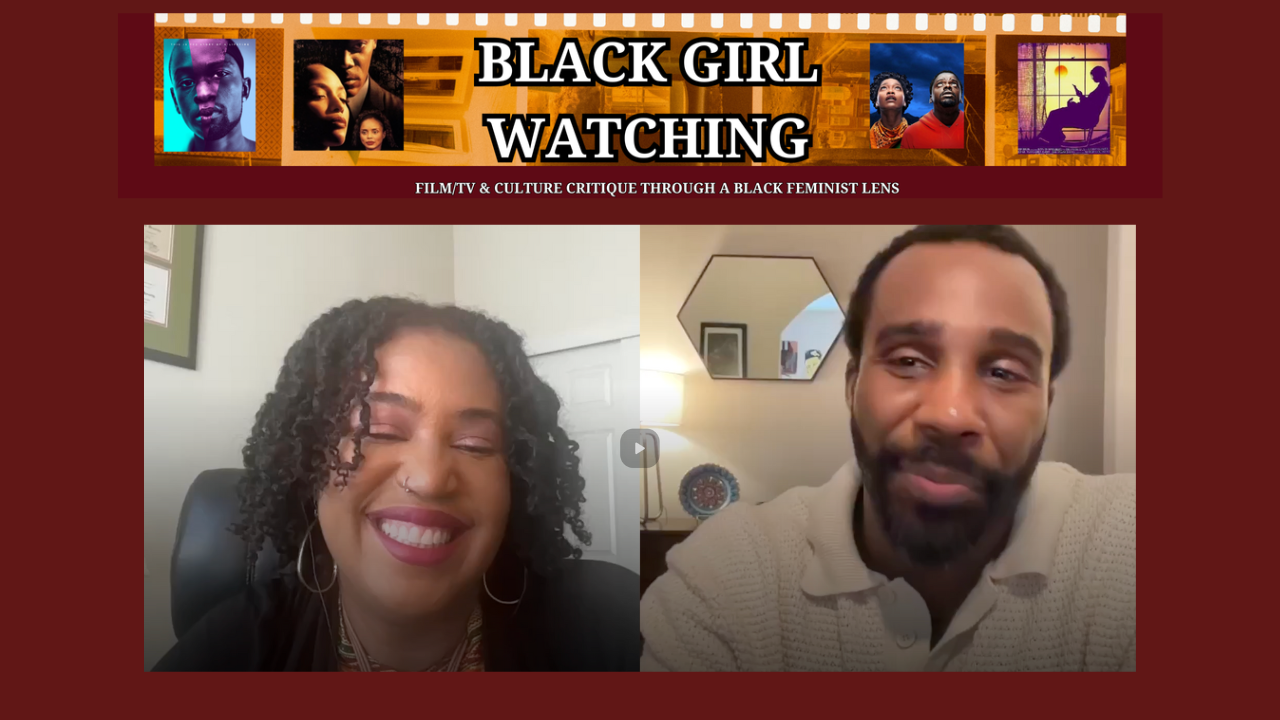***SPOILER ALERT FOR STAR WARS, ANDOR AND ROGUE ONE BELOW*****
It should come as no surprise that the Star Wars franchise about an alliance of rebels fighting against an evil Empire is anti-fascist. Since the original trilogy (OT) began in 1977, the Rebel Alliance, also known as the Resistance, has had a single goal: to liberate the galaxy from its fascist overlords.
Across films and planets, we see the storm troopers of Empire invading, colonizing, exploiting, looting and destroying, keeping the people in fear and under tight authoritarian control. Threats to Empire lead to entire cities—entire planets—being annihilated at its leader Emperor Palpatine’s command. What better way to keep people hopeless and compliant than through constant state-sponsored terrorism?
But while the OT and its three prequels and sequels focus on the force-sensitive Skywalker family of Jedi knights who can manipulate energy to their will, for either evil (Darth Vader) or good (his children, Luke and Leia), the prequel series Andor gives us something different.
Starting 5 years before the first Star Wars film, A New Hope, the Andor TV series follows Captain Cassian Jeron Andor, a skilled thief and fighter pilot with a serious vendetta against the Empire. They colonized his home planet of Kenari, hanged his father and genocided his people. But he’s got no deep love for the Rebellion—at least not at first. Throughout its two seasons, Andor features no Jedi knights, no superhuman powers, no force magic or ancestral ghosts pushing everyone forward, just a ragtime bunch of ordinary citizens facing extraordinary enemies and rising to the occasion.
Where the OT is a campy, family-friendly adventure, Andor is gritty and grounded, exposing not only the Empire’s atrocities but their aftermath on all creatures, the air and the land. In real life, the consequences of fascism couldn’t be higher and Andor takes us deep into the lives of the unsung heroes of the rebellion so we can feel every blow—and feel the bittersweetness of every victory.
With this visceral writing led by showrunner Tony Gilroy, the two-season story of Andor, complete with its grand finale film Rogue One (also co-written by Gilroy), is not only the best Star Wars story Lucasfilm has ever told, it’s also one of the most important TV shows in history. (Seriously, I’m telling my kids that the OT is Andor, Rogue One and A New Hope, it’s that incredible.)
Black feminist writer, filmmaker and activist Toni Cade Bambara once said, “As a culture worker who belongs to an oppressed people, my job is to make revolution irresistible.” Gilroy and his team have done just that, crafting a compelling series and film that both awakens the audience to our fascist reality and provides a guide to anti-fascist resistance.
“I’m writing about how I feel about all the revolutions, about all the insurrections,” Gilroy says of his intentions behind Andor and the obvious parallels critics are drawing between the show and current events, like the Ghorman massacre in season two and Palestinians being genocided by the US-Israelis in real life; and the infamous Empire of Star Wars and the continued rise of fascism in the West. “People legitimately fail to recognize how puny their individualism is. The narcissistic belief that you live in some unique time — it’s shocking. We all do it. I do it. That is not the pattern of history,” Gilroy says.
Recognizing this pattern of history is the first step in a storied anti-fascist tradition.
Know Your Enemy
Before Andor ever accepts his destiny as a revolutionary, he was very clear on who his enemy was. In season one, through flashback, we meet him as a young boy called Kassa on his homeplanet of Kenari, taking care of his even younger sister. Their dress and tribal marks suggest an indigenous culture—a sharp contrast to the colonial spaceship that crashes on their planet. With nowhere for his rage for all that the Empire has stolen from him to go, Kassa takes it out on the Imperial ship. With tiny fists and a rod as a weapon, he tears the ship apart. Though he was soon rescued and adopted by rebels Maarva and Clem Andor, renamed Cassian Andor for his own safety and therefore escaped the fate of the rest of his people, Andor never forgot that his enemy was that system of power and every cog in the wheel that kept it turning.
Knowing Andor’s background of oppression, revolutionary leader Luthen Rael recruits Andor to the Aldhani Heist in season one, promising a bigger blow to the Empire—and a bigger payday than the petty crimes Andor’s been committing on his own. This effort to steal an Imperial sector’s quarterly payroll in order to fund the rebellion would take place on Aldhani, another exploited planet, with another genocided and ethnically cleansed population, the Dhanis. Like Hawaiians, the Dhanis had been pushed into the lowlands as the Empire turned their sacred valleys into military outposts. Just hours before the heist, an imperial soldier brags in front of his soon-to-be assailant that there used to be 15,000 Dhanis who would sojourn that day for the holy ceremony of the Eye that the Heist team is using as a cover for their mission. That small number had been stomped down to 60! The Enemy brags about their terrors, not knowing that their arrogance will soon lead to their downfall.
Though Andor was only on the planet as a mercenary and not yet a revolutionary, Luthen knew enough to connect the dots Andor wasn’t yet interested in seeing—Kenari yesterday, Aldhani today, and any planet could be tomorrow. To know your enemy, pattern recognition is key.
“The Empire is a disease that thrives in darkness,” Maarva says via hologram at her funeral in the season one finale. “It is never more alive than when we sleep.” Wake up to the patterns in history that are alive today.
When the Empire and its propaganda arm, Imperial News Now, spend season two manufacturing consent for the eventual genocide of Ghorman, recognize CNN, BBC, Fox News and state governments in western settler-colonial countries colluding to manufacture consent too. Ghorman wasn’t a threat to the Empire, it had mineral resources under its surface that the Empire needed to build the Death Star. Gaza, like Iraq, has oil. Congo has cobalt.
When you see Andor kidnapped by Imperial soldiers and arbitrarily imprisoned indefinitely on Narkina 5, and you see immigrants in America kidnapped from the streets and trafficked indefinitely to a concentration camp in El Salvador, think: what is to prevent this Empire from labeling literally any person in America a criminal and trafficking them indefinitely to a labor camp?
America was built on genocide of Indigenous people of Turtle Island and Africans and our enslavement too. It can only maintain itself with more genocide, more enslavement. Just like the Empire didn’t stop with Kenari, Aldhani or Ghorman, our Empire won’t stop with Turtle Island, Palestine, Congo, Sudan, Hawaii, Puerto Rico, or Haiti. Our Empire won’t stop with “undocumented immigrants,” either. Jedha City’s fate was a practice run for Scarif and Alderaan, just like police brutality against Black Lives Matter protestors was a practice run for the bipartisan police attacks on anti-genocide student protestors. Who’s next?
Think of this reality as corporations slash jobs in favor of A.I. labor, corporate buy-backs, shareholder profits and CEO bonuses—and our government criminalizes homelessness and triples down on investments in private prisons. Won’t we make a convenient free labor force when the laws adapt to the needs of the prisons’ profits? There’s only one way out.
Right before the genocide, Ghorman’s senator Dasi Oran wouldn’t stand with secret revolutionary Senator Mon Mothma to end the arbitrary imprisonment of residents, because Oran believed compliance and appeasement with Empire would ease Ghorman’s suffering. He did not know his enemy and, ironically, wound up arrested in the Senate halls of Empire and either indefinitely imprisoned himself or likely executed for treason after all of his compliance.
In the aftermath, Mon Mothma stood alone in the Imperial Senate to call the genocide of Ghorman a genocide, because it wasn’t just one political party that was corrupt and complicit—it’s named the Imperial Senate, after all. Mon Mothma fled the facade of politics to join the real revolution underground full-time because she knew her enemy was not confined to a party. It’s the system itself that birthed cowardice.
Black and brown people have long-since peeped the Empire’s lies of “democracy” and “equality.” The fascism we know well has spread so that white Americans can now feel it too, but it’s not new; it’s simply the imperial, colonial, white supremacist boomerang coming home to roost. The Empire has divided us into hierarchies along lines of race, class, gender, sexuality and ability so that we would punch down on each other instead of up at our Enemy’s neck. This is how Empire keeps us under control. But this is not our natural way of being.
“The imperial need for control is so desperate because it is so unnatural,” says Nemick, the youngest member of the Aldhani Heist team, in a section of his manifesto that bookends both the season one and series finale of Andor. It’s why our Empire is so violent to trans and gender non-conforming people; why it must beat women, Black people and Indigenous people into submission and rob us of our rights and existence. If this submission were our natural state, instead of liberation, the Empire wouldn’t need to exert so much effort to try to enforce their will on us. “Oppression is the mask of fear,” Nemick says. “Remember that.”
Think of the guards in the Narkina 5 gulag, shivering behind locked doors when the enslaved rebellion of the prisoners led by Andor and Kino Loy begins. The guards know that the numbers aren’t on their side. There’s only one way out: If we know our Enemy—if we are to win—it must be the Empire of the 1% versus the resistance of the 99%.
Know Your Power
“We’ve grown reliant on Imperial tech and we’ve made ourselves vulnerable,” Nemick records in his audio manifesto. “There’s a growing list of things we’ve known and forgotten. Things they’ve pushed us to forget,” he says, and I can’t help but think of our tech overlords shoving A.I. down our throats on every platform. Google search is essentially non-functioning, spitting out A.I. slop instead of vetted news results. Students are openly admitting to cheating their way through school, using ChatGPT to think and write for them. They can’t even write their own emails or status updates, let alone essays. The Empire is rewriting its racist history, banning books, firing librarians, co-opting museums, and strong-arming universities because when we have time to think, to learn, and read and share ideas in community, we are a danger to the Empire.
Knowing this, the principled rebel commits to liberation by not falling into Empire’s obvious traps. Using generative A.I. not only atrophies the minds we need to think and fight back, but also steals the work of artists, destroys the environment—particularly poisoning Black and brown communities in America —and exploits Kenyan workers with $2/hour slave wages to operate it.
To free ourselves of Empire, we must free ourselves of reliance on Imperial tech. We must see ourselves in all the exploited laborers, all the cut down trees, all the wasted water discarded in its service. The principled revolutionary knows that our futures are inextricably linked.
Boycotting corporations and tools that fund genocide, destroy the environment and that are otherwise meant for our harm, empowers us to not only bring down Empires like Jim Crow in America in the ‘60s and Apartheid South Africa in the ‘90s, and Apartheid Israel today, but also frees us from the deceptive comfort and ease that these tools and corporations provide, making us principled and thoughtful with where we spend our dollar. As we divest from the complacency of comfort, we invest in an ethic of revolution.
To become this dangerous collective, we must also understand every aspect of our individual power. As we see in the series pilot episode, Andor’s trauma of leaving his little sister behind on Kenari led him straight into the revolution; it turned him into a dependable warrior who would never again leave a comrade behind. Because he studied his enemy and could successfully infiltrate the Empire, he turned his petty thievery and his survival skills as a pilot into a full-on and relentless assault on Empire, completing mission after mission for the Resistance.
“One fighter with a sharp stick and nothing left to lose can win the day,” reluctant rebel Jyn Erso quotes her mentor Saw Gerrera in Rogue One, and I can’t help but think of Palestinian professor and poet Refaat Alareer. In October 2023, in the months before his assassination in Gaza by zionist invaders, he said through tears in an interview: “I’m an academic. The toughest thing I have at home is an Expo marker. But if the Israelis invade …I’m going to use that marker to throw it at the Israeli soldiers, even if that is the last thing that I would be able to do.”
Our pain and trauma can be fuel to change the world. Our skills and gifts can be weapons. Think: what has my life experience prepared me to do for the Resistance?
Know Your People
“I have friends everywhere,” is the code phrase for rebels to recognize each other as on the same team. Deeper than code: the phrase epitomizes the Alliance. The team that pulled off the legendary Aldhani Heist was made of a thieving mercenary, a former storm trooper, a current lieutenant of the empire, two badass lesbians, and a prodigious manifesto-writing kid, bankrolled by a rich senator and organized by a former Imperial soldier-turned art collector with an incredible lacefront wig. As my grandma used to say: “It takes all kinds to make a world.”
Skeen—the 7th Heist member who turns on his team in the end—didn’t understand that. When the former storm trooper asks Skeen to cover him so he could rescue their other team member Vel, Skeen just doesn’t do it, and the former storm trooper gets shot quickly. Earlier, Skeen mentions to Andor how upset another team member was to learn of their comrade’s storm trooper days, but it appears to have been a mask for Skeen’s own feelings. But people come to the revolution when they come to it. If they have skills and knowledge that the revolution needs and are taking steps to be accountable and trustworthy—like risking life and limb to rob an Imperial bank to fund the revolution—then there must be space for defectors to join. In more ways than one, Skeen proved he was no revolutionary in the end and Andor killed him for it.
Likewise, after the Heist, Luthen sends his rebel assassins to kill Andor, as the only uncommitted loose end who could turn Luthen over to the Empire. But even after Andor realizes that Luthen is trying to kill him, he recognizes that Luthen is not his enemy—only the Empire is. After all he’s seen, survived and given to the rebellion for pay, Andor’s now a believer, ready to be all-in for the cause. “Kill me or take me in,” Andor challenges Luthen who laughs with joy that Andor is joining the revolution at the end of season one. Recruiting Andor ends up being one of the greatest decisions Luthen makes for the Resistance. Andor goes on to help and save so many people and he is also helped and saved many times, in return.
This is in complete contrast to Syril, the Imperial cog in Ghorman who’s been facilitating the genocide on his girlfriend, Lieutenant Dedra’s behalf, without even knowing what she or the Empire were really up to. He dedicated his life to the so-called law and order of Empire, only to be played and dismissed by the very system that cannot by its nature value its expendable devotees. Empire only tolerates compliance—it has no need for morality or justice, as these threaten its existence. Syril believed himself on a righteous hunt for justice when he pursued Andor to his own peril. He didn’t know his enemy, and in the end, he blames and tries to kill Andor for his own poor choices and lack of foresight. Isolated and alone, hated by the Ghormans for his betrayal of them, Syril is killed out of nowhere by a Ghorman resistance leader in order to save Andor—a decision that ultimately saves the galaxy.
The Empire wants the revolutionary to feel vulnerable, alone, depressed, outgunned, outmanned and crushed under its boots. But the true revolutionary is never alone; all over the world people are waking up and joining the Resistance. “I have friends everywhere” is both a mantra and a conjuring. It includes people we’ve yet to meet—people we’d never expect. “Rebellions are built on hope,” is a common refrain in Andor. And a community of people down for the cause are what sustain it.
Know Your Sacrifice
One of the greatest things about Andor is its refusal to romanticize a revolutionary life. Andor and Bix are so scared and plagued by what they’ve done for the revolution—and what has been done to them—that they can’t necessarily count themselves happy together. Over the course of their two-year rekindled relationship, Bix had been seeing the signs that Andor was compromising the Resistance out of fear of losing her. When Andor is ready to quit the Resistance and go be happy with Bix on a planet far, far away, she knows she must leave him. A force-sensitive healer confirmed for both Bix and Andor that he had a special calling, and Bix knew he would never leave her willingly. So she sacrifices being together so that he can pour his all into the rebellion. “If I’m giving up everything,” she says, “I want to win.”
Vel and Cinta, Luthen’s top rebels and the badass lesbians from the Aldhani Heist also can’t seem to make a revolution and a romantic relationship work. When Vel tries to get closer to Cinta, Cinta tells Vel she already knew the deal from the jump: “The rebellion comes first. We take what’s left.” Like the Jedi knights that came before them, it seems that fear of losing love is not only a distraction from purpose but also, like we see with Anakin/Darth Vader in Revenge of the Sith, a path to the dark side.
But their inability to sustain both romance and revolution should not be mistaken for a belief that a revolutionary must sacrifice love. Though hate for Empire may be many a revolutionary’s entry point, it is in no way a sustaining emotion. Indeed, as Che Guevara once said, “At the risk of seeming ridiculous, let me say that the true revolutionary is guided by a great feeling of love. It is impossible to think of a genuine revolutionary lacking this quality.”
Andor and Bix don’t stop loving each other, nor do Vel and Cinta. What they sacrifice, instead, is the part of themselves that values their own safety, comfort and love above everyone else’s. Their love is not safe from Empire until everyone is safe from Empire.
Luthen might be the one who gives voice most clearly to what a revolutionary sacrifices:
“Calm. Kindness. Kinship. Love. I’ve given up all chance at inner peace. I’ve made my mind a sunless space. I share my dreams with ghosts. I wake up every day to an equation I wrote 15 years ago from which there’s only one conclusion: I’m damned for what I do. My anger, my ego, my unwillingness to yield, my eagerness to fight, they’ve set me on a path from which there is no escape. I yearned to be a savior against injustice without contemplating the cost and by the time I looked down there was no longer any ground beneath my feet. What is my sacrifice? I’m condemned to use the tools of my enemy to defeat them. I burn my decency for someone else’s future. I burn my life to make a sunrise that I know I’ll never see. And the ego that started this fight will never have a mirror or an audience or the light of gratitude. So what do I sacrifice? Everything!”
Finally caught in Lieutenant Dedra’s trap by the end of season two, Luthen stabs himself, his mission of funding an operating rebel base on Yavin 4 and passing information about the existence of a planet-killing weapon to his confidante Kleya now complete. He burned his life building the Resistance and in the end, it’s only Kleya and Andor who show him gratitude and fight to make sure his sacrifice was worth it. There’s just no guarantee.
In the series finale, Vel—who lost Cinta in a rebellion on Ghorman—urges Andor to reconnect with Bix before it’s too late. She must know that Bix has had his child, even if Andor doesn’t know. He says he’ll do it when there’s time but he’s off to his next mission to pursue Luthen’s intel on the Empire’s potentially nuclear weapon. And he’s out of time. He dies in Rogue One in a blaze of that nuclear weapon just moments after completing his final mission, fueling a sunrise he’ll never see.
The famous opening crawl of 1977’s A New Hope (which picks up immediately after the events in Rogue One) simply declares that the Rebel Alliance has achieved a big victory against the Empire by stealing the plans for how to destroy its Death Star weapon. It doesn’t even mention Andor or his sacrifice—nor the dozens of other rebels in the fleet who died on Scarif for this bittersweet victory.
For every Kleya that Andor could rescue, he couldn’t save his own sister. For the child of Galen Erso (who built the Death Star with its fatal flaw) that Andor protected until their bitter end in Rogue One, he would never even be able to meet his and Bix’s own.
“You think I’m crazy?” Saw Gerrera asks. “Yes, I am. Revolution is not for the sane. Look at us. Unloved. Hunted. Cannon fodder. We’ll all be dead before the Republic is back and yet, here we are.”
But oh, “If I must die… in a blaze— and bid no one farewell, not even to his flesh, not even to himself—” Refaat Alareer writes in a poem before his murder in Gaza, “let it bring hope. Let it be a tale.”
You do your part; you run your race and pass that baton forward until the sun rises and the revolution comes.
Know Your Endgame
Before I was bullied by my friend Charles into watching Andor, I had never taken any interest in a non-Skywalker Star Wars story. I hadn’t seen Rogue One until Monday, after I finished my Andor season 2 screeners. I was unprepared for how gutting it would be to see Andor and Galen’s daughter Jyn Erso destroyed on Scarif in the nuclear blast of the Death Star. To see Andor grow from a vengeful thief into a loving revolutionary; to watch him survive two seasons of countless attacks, blaster burns, spaceship crashes, two enslaved uprisings, two genocides, an Imperial bank robbery, and the nuclear blast on Jedha City at the beginning of Rogue One just to die a short while later in a second blast in Scarif, made me feel the way Empire wants us to feel. Emotionally destroyed. Depressed. Defeated. Hopeless. One of the realest revolutionaries in the galaxy was taken out by incompetent unmitigated evil. Is this victory? What was it all for?
Then I rewatched Episode IV: A New Hope. No, Andor’s name is never mentioned and his and Jyn Erso’s sacrifice to get Leia the plans to destroy the Death Star don’t seem to be known by any of the main players in the OT film. But a whiny farmboy from Tatooine who happened to also be a damn good pilot himself, takes those plans, let’s Jesus take the wheel, and drops two bombs exactly on the target, destroying the Death Star at the end of the movie.
For all of the many times since college that I’ve seen A New Hope, I have only now on this rewatch actually cry buckets of tears—of sadness and joy. We know the sacrifice it took to win this victory. We know what was lost to win. In that context, everything is more precious; everything has more weight; everything means more.
When I think of the structure of Star Wars—the original saga starting in the middle at Episode IV, going forward in time, then backing up to the beginning; Andor picking up right after Episode III and Rogue One leading into Episode IV—I think about Toni Morrison’s first novel. In The Bluest Eye, she tells the entire story on the first page and dares the reader to continue. “If he turns the page,” she said in her documentary, The Pieces I Am, “it’s because he wants either to find out how it happened or he loves the language.”
In these Star Wars sequels and prequels, we already know how the story ends: Darth Vader and his two Death Stars will be destroyed, the Jedis will reemerge, the Force will awaken and return to balance—the endgame is that the Resistance will win. The Empire will fall. The people will be free. Everything else is just the “how” — and a lifetime’s worth of beautiful language.
“You made this decision long ago,” Andor reminds a young revolutionary who asks him for reassurance as she fears her imminent death. “The Empire cannot win. You’ll never feel right unless you’re doing what you can to stop them. You’re coming home to yourself. You’ve become more than your fear. Let that protect you.”
I watched this opening scene of the rare but still nameless Black woman revolutionary having this moment with Andor in the season two premiere and I couldn’t help but think of Assata Shakur: “It is our duty to fight for our freedom. It is our duty to win. We must love each other and support each other. We have nothing to lose but our chains.”
I watch this series and I think of the Tonis—Morrison and Cade Bambara—I think of Assata. I think of Angela. So, if I have any criticism of Andor, it’s the same one I have had for all of the Skywalker-driven Star Wars properties since 1977—where are the revolutionary Black women of consequence in this story???? In real life, Black women are foundational thinkers and creators of revolutionary art. To have not one Black woman revolutionary of any significance in Andor’s story arc seems like a bow to the racist fanbase that has a conniption whenever a Black woman or non-white person gets to do anything significant in fantasy. The principled anti-fascist knows their enemy and doesn’t comply in advance. Despite this glaring oversight, Gilroy gave us something eternal; he ran his race and passed the baton forward with visuals and language—the language!—that will rattle in the brain until it spur is onward in revolutionary love.
“There will be times when the struggle seems impossible,” Nemick says in his manifesto that’s now been spread around the galaxy by the season two finale, long after his mid-season-one death. “I know this already. Alone unsure, dwarfed by the scale of the enemy, remember this: freedom is a pure idea. It occurs spontaneously and without instruction. Random acts of insurrection are occurring constantly throughout the galaxy. There are whole armies, battalions that have no idea that they’ve already enlisted in the cause.
“Remember that the frontier of the Rebellion is everywhere and even the smallest act of insurrection pushes our lines forward.…Remember that. And know this: The day will come when all these skirmishes and battles, these moments of defiance will have flooded the banks of the Empire’s authority and then there will be one too many. One single thing will break the siege. Remember this. Try.”
Never forget that original creator George Lucas set this entire revolutionary franchise not in the future, but “a long time ago.” These stories of anti-fascism take place in the past to spark a guarantee for us that fascism will not be our future. Today, we’re witnessing the dying gasps of Empire and we already know that we will win. The Empire will fall. The people will be free. With every step forward, we write the how.
Stay watchin’,
Brooke
Like this piece? Tip your writer!
